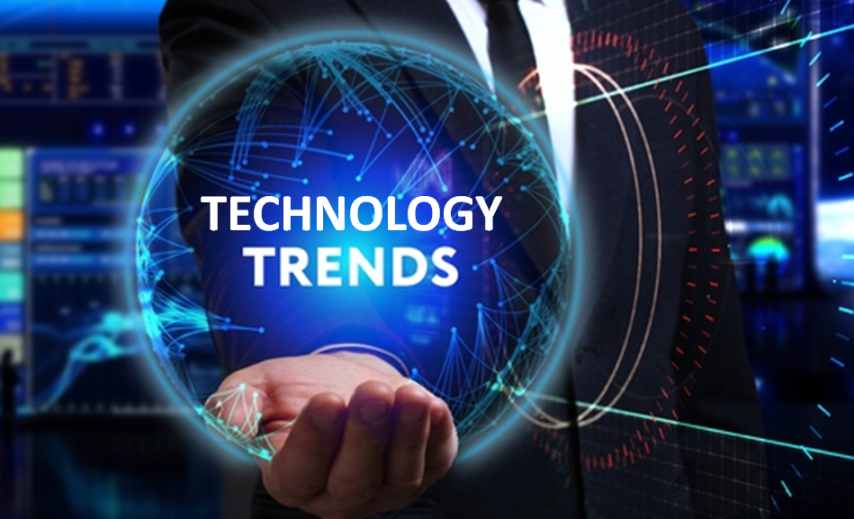Top 10 technology trends of 2021 and beyond

2020 is a very challenging year, to say the least. As coronavirus continues to wreak havoc and disruption around the world, 2020 has been a year of chaos, pandemic, and uncertainties. 2020 will also be remembered as a year that forever changed our ways of life. With many people working from home and families unable to spend time together, millions of people around the world have to rely on video conferencing like Zoom to communicate with one another.
At the same time, coronavirus has also accelerated the mainstream adoption of other technology such as AI-enabled mobile virtual assistants, 5G networks, and other remote technology solutions as telemedicine and remote surgical operations. As people adapt to new ways of life, innovative startup companies that enable us to work, shop, and interact virtually, are pushing the envelope by introducing new technologies that will help us better cope with challenges that come with living in a post-COVID-19 world.
While we may have not yet colonized the Red planet or seen flying cars in our major cities, in 2020, we have seen how big tech companies are leveraging emerging technologies like artificial intelligence, big data, robotics, and sensors to develop therapeutics and vaccines to help people affected by the coronavirus and also enable millions of people to work from the comfort of their homes.
Companies like Tesla and GE are also repurposing their operations to develop ventilators that are needed to keep critically ill coronavirus patients alive. Moderna is another biotech company leveraging the mRNA (messenger RNA) vaccine, a new type of vaccine for providing acquired immunity through an RNA containing vector, to develop a new vaccine in record time that would have otherwise many years to develop. Biotech companies are now leveraging emerging computing technologies such as machine learning and artificial intelligence to expand the scope and scale of their research and reduce the time it takes for them to bring new products to the market.
In January, we wrote about the Top 10 Technologies of The Next Decade. In as much as these technologies are still relevant today, a lot has changed since then. Some of the technologies lost their top spots while others like blockchain did not make the list. Blockchain hype may be over. However, artificial intelligence (AI) still remains at number one due to its impacts and broad application in many sectors like healthcare, finance, and manufacturing. We are now at a new inflection point where AI will forever change our ways of life. With four months left in the year, we want to take a look at how these emerging technologies fare to date.
Unlike our January article, the 2021 list takes into consideration current events around the world, the use of these emerging technologies to fight the ongoing coronavirus pandemic, impact in the post-coronavirus world, input from 800 experts and executives surveyed by the World Economic Forum (WEF), and findings from the Emerging Technology Community of CompTIA, the nonprofit association for the global technology industry. And now, let’s jump right in.
With just five more days left until the end of the year, we want to take a look at the top 10 technology trends that we believe will shape the year 2021 and the next decade. We think these coronavirus-fueled tech trends will continue to dominate daily life over the next decade. The technologies include AI as a service, blockchain, extended reality, and many more.
1. Artificial Intelligence and Machine Learning – AI and ML continue to remain at the top spot. AI is not only dominating the information technology sector, AI permeates our daily lives. It manages our electronic devices, and homes, helps us navigate, and advises us what to watch, read, listen to, and buy. Biotech companies are also integrating AI with other technologies to provide much-needed solutions in remote healthcare, prevention, diagnosis, hospital care, public safety, and helping industry, cities. AI is the largest force in emerging technology and its applications span other areas including robotics, the Internet of Things (IoT), clouding computing, cognitive automation, security, finance, and many more. This year, we also see the rise in a new type of AI called Formative AI. Unlike generative AI, Formative AI can dynamically adapt over time and generate novel models to solve specific problems. Other emerging uses of AI include adaptive machine learning, edge AI, edge analytics, explainable AI, AI platform as a service (PaaS), transfer learning, generative adversarial networks, and graph analytics.
2. Sensing and Mobility – With millions of people around the world now working remotely, sensing and mobility are two technologies that are making impacts on our lives. As Brian Burke of Gartner describes it, “Sensing and mobility sound like two very different things, but they are actually very closely related, in that it is sensing that is enabling mobility.” Sensing and Mobility technologies involve the use of, for example, 3D-sensing cameras, AR cloud, light-cargo delivery drones, flying autonomous vehicles, and autonomous driving.
3. Next-Generation Cognitive Computing – Cognitive computing is new on our list. It is one of the neuromorphic technologies that use computerized models to simulate the human thought process in complex situations where the answers may be ambiguous and uncertain. Unlike AI, Cognitive computing is a collection of technology platforms that, broadly speaking, are based on the scientific disciplines of artificial intelligence and signal processing. Unlike AI which focuses more on providing accurate results by augmenting human thinking to solve complex problems, cognitive computing or thinking, on the other hand, aims at mimicking human behavior and adapting to human reasoning, aiming to solve complex problems in a manner similar to the way humans would solve them.
4. 5G – 5G is the 5th generation mobile network that offers improvements over 4G, such as low latency, intelligent power consumption, and high device density. With 5G, remote surgery is now possible. As we wrote back in October 2019, 5G is now being used to perform remote surgery from thousands of miles away, and it could potentially transform the entire healthcare industry. In 2019, doctors in China used 5G to perform remote surgery, inserting a stimulation device in the brain of a Parkinson’s patient from nearly 1,900 miles away. In addition to medicine, 5G will make also augmented reality, smart cities, and connected vehicles possible.
5. Augmented Reality/Virtual Reality – Early this year, AR and VR took the number 9 spot. With coronavirus and the permanent transformation of the future of work post-pandemic, virtual reality and augmented reality have the possibility to greatly improve remote work and change the way we work forever. Early this year before the coronavirus pandemic, Facebook brought up the idea of remote work using augmented and virtual reality. Facebook has long believed these technologies could be used well beyond entertainment. Back in May, Andrew “Boz” Bosworth, Facebook’s head of AR and VR, said the social giant is already investing in “supercharging remote work and productivity” using AR and VR technologies. AR and VR also have the potential to transform how humans engage with machines, data, and each other.
6. Serverless and Next-Generation Cloud Computing – Today, cloud computing permeates many aspects of our lives. Whether we realize it or not, most of the data used in our everyday voice communication are stored in the cloud by tech companies like Apple, Verizon, Google, among others. Serverless computing is a cloud computing execution model where providers provide backend services on an as-used basis. Servers are still used, but a company that gets backend services from a serverless vendor is charged based on usage, not a fixed amount of bandwidth or number of servers. Also known as Function as a Service (FaaS), serverless computing, allows companies to build applications that scale in real-time so that they can respond to demand that can change instantly depending on orders of magnitude. As we mentioned above, cloud computing provides scalable and unlimited computing resources they need for their research and also reduces the time it takes for them to bring new products to the market.
7. Natural Language Processing – NLP is a field of artificial intelligence that enables computers to analyze and understand human language. NLP deals with the interaction between computers and humans using natural language. The speech-to-text converts human language into a programming language and text-to-speech converts a computer operation to an audible response. NLP is used in wide arrays of devices we use in our daily lives. The emergence of AI chips, also known as AI accelerators, will further accelerate advances in NLP. For example, voice assistants like Alexa and Siri have built-in NLP engines that convert speech into words, sounds, and ideas. Unfortunately, today’s mainstream voice assistant solutions — Alexa, Siri, Google Home — were not made to deal with the industrial environment. The next-generation of NLPs is now being used in industrial IoT devices. Back in 2019, we wrote about Onvego, a Tel Aviv, Israel-based AI technology startup that specializes in the field of smart voice, speech and language processing, and next-generation NLP and language processing. Using NLP technology, Onvego enables IoT devices to be activated by voice commands, even when offline.
8. Robotics – Robots have been around longer than you think. The earliest robots as we know them today were first developed by George C. Devol, an inventor from Louisville, Kentucky. A lot has changed since the first robots were first developed in the early 1950s. Robotics is the intersection of science, engineering, and technology that produces machines, called robots. Unlike ten years ago, Robotics has shifted from just industrial use to service and food delivery. Robots are impacting homes and businesses, both physically and virtually. As we mentioned above, with the arrival of the 5G technology, doctors are now using robots to perform surgery remotely. In addition to surgical robots, hospitals and treatment centers are now using robots to improve the quality of care and patient outcomes.
9. Internet of Things (IoT) – The Internet of Things, in a simple term, is basically the idea of connecting any device to the Internet and to each other. The device, which is also called an IoT device, is a piece of hardware with a sensor that transmits data from one place to another over the Internet. IoT devices include wireless sensors, software, actuators, and computer devices, and many more. Unlike in the early days of IoT, the next-generation IoT has ushered in a new era of the fourth industrial revolution, also known as Industry 4.0. Specifically, Industry 4.0 focuses on smart factories that rely on the Internet of Things. It affects every industrial process from manufacturing to logistics and supply chains. IoT is one of the nine pillars or building block of Industry 4.0.
10. Quantum Computing – Unlike the conventional computers that store information using bits represented by 0s or 1s, quantum computers use quantum bits, or qubits, to encode information as 0s, 1s, or both at the same time. Quantum computing began in the early 1980s when physicist Paul Benioff proposed a quantum mechanical model of the Turing machine. Since then, tech giants like Google and IBM have been working on bringing the technology to the mainstream. Back in September, we wrote about Google after the search giant became the first company to achieve Quantum Supremacy. Quantum computing will open new realms of possibilities and helps solve previously impossible computational problems.

